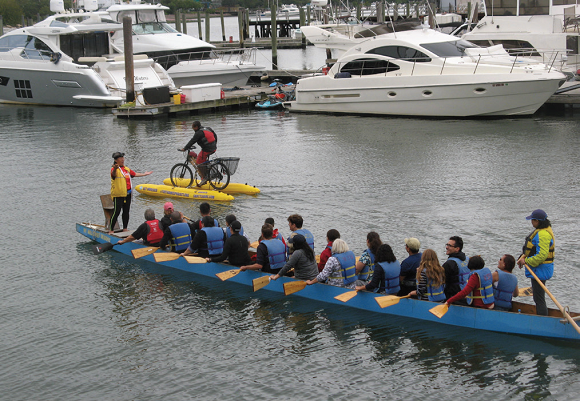On the north shore of central Queens, the East River’s water enters Flushing Bay and Creek and up until the 1920s the surrounding land was a wetland. Where LaGuardia Airport is today in East Elmhurst was North Beach where people came to swim and also enjoy an amusement park and many large homes were built overlooking the bay.
When LaGuardia Airport was being built, thousands of acres of wetlands were filled in and the airport opened in 1939. The area we now know as Flushing Meadows-Corona Park was also wetlands and was filled in with ash from all the incinerators that burned coal for heat and electricity in the city.
Plans were set forth by City Planning Commissioner Robert Moses to build a highway and bridge system that would connect Queens and the rest of the city to Long Island. All the major highways and bridges we have today were inspired by Moses. He also had a plan for the 1,200 acres of ash dump and wanted a park and a home for the World’s Fair in 1939. The waters of Flushing Creek would be used to create the largest manmade lake in the city.
Then in 1960 the marshland in Willets Point was filled in so Shea Stadium could be built. The World’s Fair of 1964 saw the park expand to Flushing Bay and the World’s Fair Marina was constructed which many boat owners still use today.
Years of industrial waste from businesses along the bay and creek and from the dumping of raw sewage made the water quality bad. Park goers and boat owners said it smelled like rotten eggs and made people sick and there were no fish or wildlife to be found.
All the waterways around NYC were in a polluted state so environmentalists pushed Congress to pass the Clean Water Act in 1970. Since then laws have been in place to limit industrial and human waste going into waterways to prevent further damage to the environment.
In 2007, NYCDEP built a 43.5M gallon underground tank in Flushing Meadows-Corona Park that was going to solve the problem of sewage entering Flushing Bay and Creek. Sadly, this has not stopped the dumping of raw sewage. Each time it rains the sewage treatment plants throughout the city can’t handle the amount of rain and sewage and what the excess is discharged into our waterways. In Flushing Bay alone nearly 3 billion gallons are discharged and to give you a visual that is enough to fill the Empire State Building 10 times.
With all the high rises being built in Flushing along the creek and with plans for developing Willets Point, having good water quality will be a challenge for decades. The DEP wants to chlorinate the waste and discharge it into the water and environmentalist groups feel that plan is dangerous to the ecosystem and they want more capacity to store waste to be later treated at sewage plants.
New York City has 520 miles of waterfront and we have seen the water cleaner than it’s been in 100 years. NYCDEP has done much; in the last 10 years alone they have invested $10 billion dollars in sewage treatment plants, sewer upgrades and green infrastructure such as constructing wetlands and finding ways to prevent rain water from entering waterways with things like bioswales and green roofs etc. In 1980, 110 billion gallons of sewage entered our waterways. In 2016, it was 20 billion gallons – still a large amount but thanks to environmental groups and a dedicated government agency, things are getting better. We still have a long way to go.
On May 2, Riverkeeper, an environmental group dedicated to cleaning our waterways, will have its 8th annual River Sweep at 122 locations in New York State including Flushing Bay and Newtown Creek. Volunteers clean trash and debris from the shoreline, everything from tires to plastic bottle caps can be found, tools and gloves will be provided.
The Flushing Bay cleanup is dedicated to Jennifer Merendino who organized the first clean up in 2009 after she joined a Dragon Boat team of cancer survivors; the teams practice in Flushing Bay. While getting treatment at Memorial Sloan Kettering, nurse Donna Wilson thought it would be good for patients to participate in team rowing. Dragon Boat teams consist of 20 rowers, one steerer and one drummer, and is quite a workout. Sadly, Jennifer passed away in December 2011 but the teams have continued and have taken part in races all over the world. Each year Flushing Meadow Lake hosts a Dragon Boat Festival.
For more info search online: Riverkeeper.org or NYC Dept. of Environmental Protection nyc.gov/dep.




